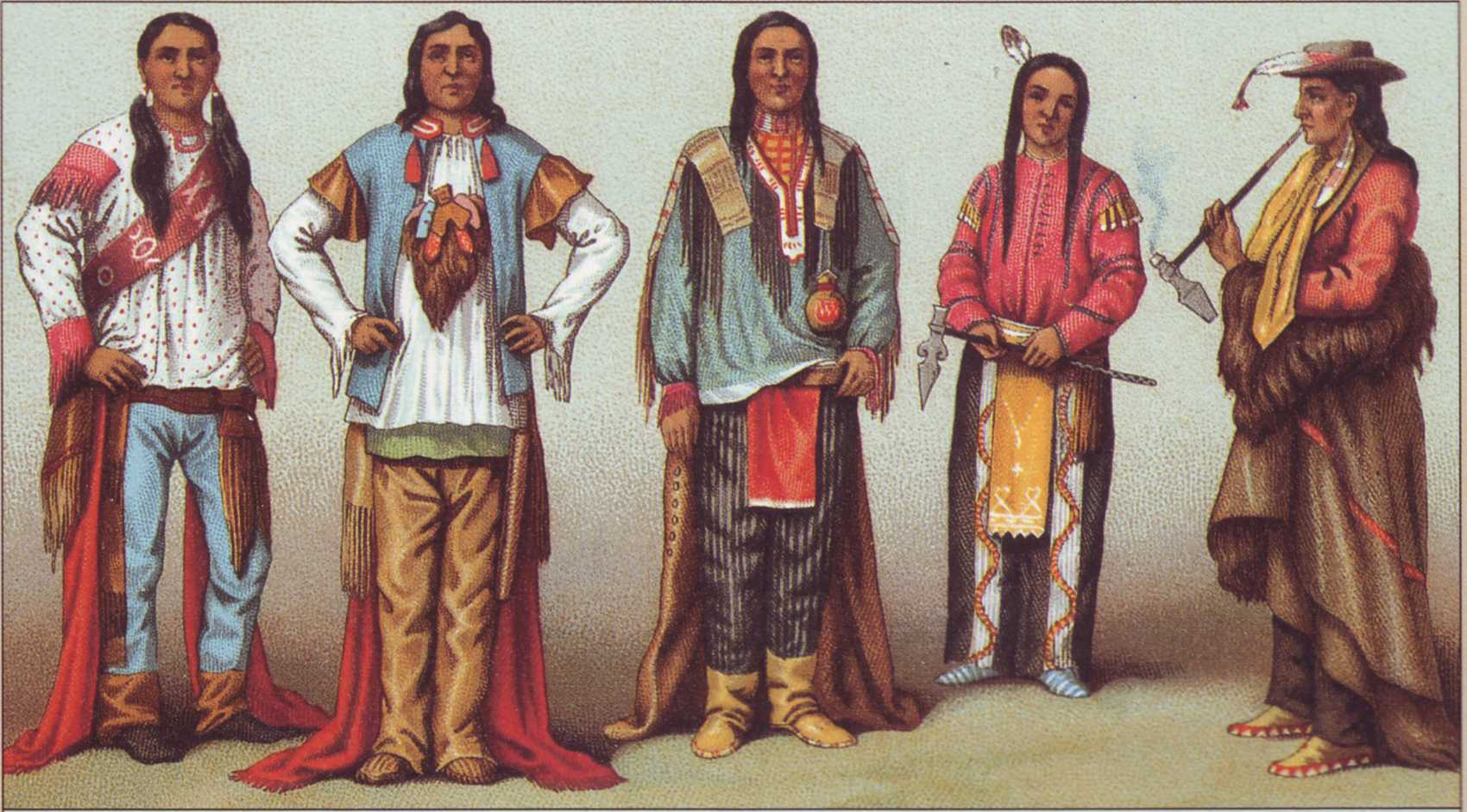
Create an Amazon Wedding Registry
THE HISTORICAL ENCYCLOPEDIA OF COSTUME
ALBERT RACINET
THE CLASSIC WORK OF THE 19TH CENTURYp68-69
19TH CENTURY ANTIQUE CIVILIZATIONS
AMERICAN INDIANS
NORTH AMERICA - YUTES - SIOUX - IOWA
Upper Register

THE NATIVE INDIANS OF NORTH AMERICA were once one of the largest groups of hunting peoples known to history. Hunting was the source of their entire livelihood, until the coming of the Europeans and the introduction of guns, glassware and eau de vie. These things developed into necessities for the Indians, who paid a high price for their trade with the devastation of their lands. Expert horsemen, their costume was ideally suited to the needs of the rider, the hunter and the warrior.
1.1, 2 & 3 Yute chiefs, from the Great Salt Lake area of Colorado. Yute chiefs do not wear head-dresses because their characteristic slight elongation of the skull is considered a mark of beauty. To achieve it, the skulls are flattened during childhood.
One of the most traditional items of Indian costume is the tunic. Finely decorated with fringes and hems, this can be of any length, and is now worn as a ceremonial garment.
Since they live in the saddle, the Yutes wear short hunting vests with long trousers made from hide or wool. A characteristic touch is a piece of wool or leather divided in two and tucked into the belt, as in 1.1, or drawn back each side over the thighs and buttoned into place, as in 1.3. This is intended to protect a horseman's legs without hindering movement.
The hunting vests, worn over an under-vest, have long, flared sleeves that are fringed at the wrist. In 1.1 the vest is decorated with a baidric made of embroidered moose hide. In 1.2 it is decorated with a breastplate of feathers and dyed strips of leather.
Yutes covered their hair with grease and either wore it loose (1.2) or plaited back from the front with the pieces at the side.
1.4 Sioux chief. Also great horsemen and hunters, the Sioux have a costume similar to that of the Yutes, with the difference that headdresses are worn. Feathers for these are generally taken from wild cocks and pheasants, but chiefs take them from from eagles and birds of prey. Each headdress is designed by the wearer to fit his own self-image, and its style often determines the name: "Big Chief Bustard", for example, or "White Crow".
1.4 is a chief's son. Decorations are sewn on to his woollen leggings and his shoes are made of cotton. In the other illustrations moccasins are worn. These are made from the treated hide of a moose or stag.
